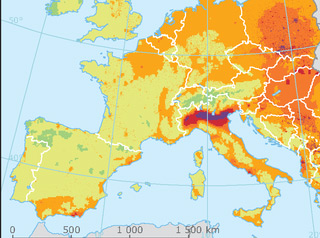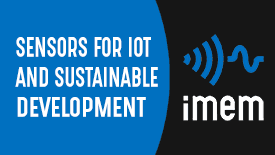Magnetic sensor for automotive
Gas sensor for air pollution
Modern industrialization and current urbanization are making the problem of air pollution increasingly serious. Air quality is very important for human health, as several serious health problems can depend on it.
Unfortunately, the sensing stations that nowadays measure the air quality are cumbersome and very expensive, and therefore can give very partial information, usually in areas of heavy car traffic.
However, these are not conditions that reflect the environment in which the human being lives. In fact, citizens live most of their time in the office, at home and in other closed spaces (supermarkets, shopping centers, museums, cinemas ...) and open spaces (parks, cycle paths, vegetable gardens ...). It is therefore important to monitor the quality of the air in all these environments, so as to be able to improve it and minimize the effects of pollutants on health and consequently on the health system.
Frequent and extensive monitoring, however, requires much smaller and cheaper instruments than the sensing stations currently in use, devices that can be integrated in the various environments and possibly networked in order to provide contextualized information..



An ideal candidate for this use are resistive sensors (or "chemoristors") based on nanostructured metal oxides, whose fabrication is relatively simple and cheap, and whose dimensions allow their integration down to dimensions similar to those of a smartphone.
Unfortunately, this type of sensors is too sensitive and perceives almost every gas, without discriminating between different gases. For this reason, the innovative approach that we have developed in recent years involves the use of some of these sensors integrated in a small chip (the size of a few tenths of a millimeter) subjected to a thermal gradient. The responses of the various sensors are combined and analyzed with machine learning techniques, making the system capable not only of identifying the gas present, but also its concentration.
Energy supply integration
The integration of renewable energies into our daily life and the optimization of the energy consumption are key factors for sustainable development and the mitigation of climate change. In particular, the integration of renewable energy becomes strategic in the field of sensor systems for smart cities.
In the smart city of the future, the greatest need is to create a continuous communication between objects, infrastructures and citizens. To achieve this, the best solutions are the Internet of Things (IoT) applications. The internet of things, with its omnipresent connectivity and the ability to collect, transmit and process large quantities of data from diffused sensor systems with low electricity consumption, allows to make decisions for improving many aspects related to cities, such as air quality, vehicle traffic, lighting, maintenance, etc.
In recent years, the technologies of outdoor IoT are requiring mobile solutions, which can be easily moved and continuously adapted to the urban area, independent of the infrastructure where they are temporarily installed, i.e. portable weather stations, sensors for monitoring the health of urban greenery or mobile connectivity systems with 5G technology. In these systems, energy self-sufficiency becomes an essential prerogative for their functioning and also becomes basic for those distributed IoT systems that are installed on infrastructures that do not have easy access to the electricity network, as bike sharing spots or CCTV systems. In all these cases the "green" technologies for energy generation are optimal for powering IoT systems in "stand alone" mode.
The research of the AdR in the energy field is based on finding specific solutions to power the sensor systems developed at IMEM. Among these solutions, the greenest and more compatible with outdoor IoT systems is based on photovoltaic (PV) technology.








